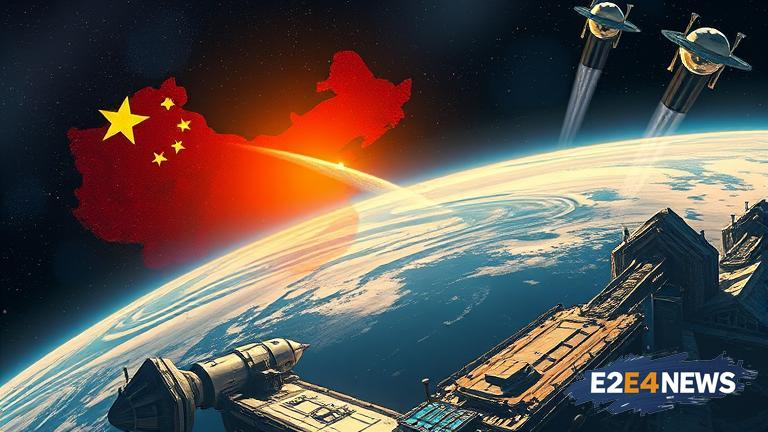China has unveiled its ambitious plans for space exploration and development, with a focus on establishing a lunar research station and a Mars exploration program. The plans were announced by the China National Space Administration (CNSA) and outline the country’s goals for space exploration and development over the next few years. According to the CNSA, China plans to establish a lunar research station on the south pole of the moon, which will be used to conduct scientific research and develop new technologies. The station will be equipped with advanced facilities and equipment, including a lunar lander, a lunar rover, and a satellite. China also plans to launch a Mars exploration program, which will include the launch of a Mars orbiter and a Mars lander. The orbiter will be used to study the Martian atmosphere and geology, while the lander will be used to search for signs of life on the planet. In addition to these plans, China also announced its intention to develop a new generation of launch vehicles, including a heavy-lift rocket and a reusable rocket. The heavy-lift rocket will be used to launch large payloads into space, while the reusable rocket will be used to reduce the cost of access to space. China also plans to develop a new generation of satellites, including a high-resolution Earth observation satellite and a deep space exploration satellite. The Earth observation satellite will be used to monitor the environment and natural resources, while the deep space exploration satellite will be used to study the universe and search for signs of life. Furthermore, China plans to establish a space-based solar power station, which will be used to generate electricity and beam it back to Earth. The station will be equipped with advanced solar panels and a microwave transmitter, and will be used to provide a clean and sustainable source of energy. China’s plans for space exploration and development are part of its broader strategy to become a major player in the global space industry. The country has already made significant progress in space technology, including the launch of its own space station and the development of a range of satellites and launch vehicles. China’s space program has also been marked by a number of notable achievements, including the landing of a lunar rover on the far side of the moon and the launch of a Mars orbiter. However, China’s space program has also faced a number of challenges, including the loss of a satellite and the failure of a launch vehicle. Despite these challenges, China remains committed to its goals for space exploration and development, and is expected to continue to make significant progress in the coming years. The country’s plans for space exploration and development have also been welcomed by the international community, with many countries expressing interest in collaborating with China on space-related projects. The United States, in particular, has expressed interest in collaborating with China on a range of space-related projects, including the development of a lunar research station and a Mars exploration program. However, the collaboration between the two countries has also been marked by a number of challenges, including concerns over intellectual property and the potential for military applications. Despite these challenges, the collaboration between China and the United States is expected to continue, with both countries recognizing the benefits of working together on space-related projects. In conclusion, China’s plans for space exploration and development are ambitious and far-reaching, and reflect the country’s commitment to becoming a major player in the global space industry. With its plans for a lunar research station, a Mars exploration program, and a range of other space-related projects, China is expected to make significant progress in the coming years and to play an increasingly important role in the global space industry.
